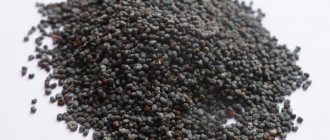Can pregnant women eat radishes?
Radish is famous for its medicinal and nutritional properties.
But is it beneficial to use it during pregnancy? In fact, the fruits may be harmful to pregnant women. But, knowing how to choose, prepare and consume this vegetable correctly, harm can be prevented. Read about it below. [ads2]
Salads and cold appetizers with radish are tasty, moderately spicy and very healthy. The vegetable, along with other root vegetables, belongs to the category of healthy dietary food and contains a number of vitamins and minerals. The valuable properties of the product consist of the following actions:
- The abundance of fiber will help the expectant mother relieve constipation
- Essential oils stimulate appetite and help improve digestion
- The product stimulates the production of bile, therefore it is useful for stagnation of bile, problems with the hepatobiliary system (common in pregnant women)
- The presence of phytoncides in root vegetables is a sure sign that it can easily cope with coughs, colds, acute respiratory viral infections, sore throats, and will help strengthen the immune system and body resistance
Radish is very beneficial for the health of the expectant mother and child. Due to the content of folic acid, the root vegetable contributes to the normal formation of the fetal neural tube. Zinc, which is part of radish, is involved in the development of the nervous system. B vitamins help the baby grow, and calcium and phosphorus help the formation of bone tissue and teeth.
At the same time, radish, due to the special essential oils it contains, can harm the expectant mother and child. During thermal treatment, these substances evaporate, and the product loses its harmful properties. Information about the benefits and harms of root vegetables during pregnancy is shown in the table.
| Types of radish | Benefit | Harm |
| White | Slows down the aging process, prevents the occurrence of malignant neoplasms, inhibits the vital activity of pathogenic agents, improves digestion, normalizes kidney function, removes toxic substances from the body, and has a beneficial effect on the condition of the skin. | Intestinal dysfunction due to excessive consumption. |
| Black | Reduces “bad” cholesterol, prevents the development of gallstone disease, eliminates signs of flu and colds. | Increased uterine tone, provoking spontaneous pathological abortion. |
| Green | Normalizes the process of bowel movement, prevents the development of viral diseases, normalizes blood pressure, cleanses liver cells of toxic substances, and has diuretic properties. |
Radish is considered one of the most effective natural medicines for fighting cough. Such an effective remedy as radish with honey can be used during pregnancy only after consultation with the attending physician and in the absence of:
- allergies to radish and bee products;
- threats of increased uterine tone;
- diabetes mellitus
Properties of radish
The black vegetable consists almost exclusively of useful substances. The root vegetable contains trace elements: potassium, magnesium, iron, sodium, calcium and phosphorus. A bouquet of useful microelements is complemented by vitamin C. Therefore, black radish is used in folk medicine as a means of strengthening the human immune system.
By taking the fruit, people's appetite improves, metabolism accelerates, and all digestive processes improve. The root vegetable also serves as a prophylactic against atherosclerosis. But we must not forget that if a person has gastrointestinal diseases, then radish is prohibited.
Against the backdrop of all these beneficial properties, pregnant women add this root vegetable to their menu. Often, when you feel unwell and have a cough, radish with honey is used during pregnancy.
The root vegetable is used to treat ailments such as:
- colds;
- cough of any nature;
- constipation;
- anemia;
- hypertension;
- gastrointestinal diseases.
The list does not list all cases when the use of the fruit is appropriate.
The combination of two ingredients, honey and radish, cures a person from many diseases. This combination enhances each other’s healing properties and is why it is so popular among the people.
Radish during pregnancy - beneficial properties.
This unpretentious vegetable does not require a special soil composition and strict rotation of garden crops; it tolerates temperature changes and drought well, becoming richer from a lack of moisture and acquiring a burning taste. It is provided by mustard oils in the pulp and leaves. The tops are very similar to radishes; behind the black skin lies juicy white pulp with a specific smell.
In Asia, radish has been cultivated as a vegetable crop for many centuries. It came to other countries much later and was prejudiced against it until they learned about its medicinal and preventive properties.
Interesting: radish does not occur in the wild in nature.
The composition of the root vegetable includes:
- vitamins C and group B;
- Rafanin;
- essential oil;
- carotene;
- a nicotinic acid;
- calcium;
- magnesium;
- potassium;
- iron;
- phosphorus;
- iodine;
- enzymes;
- phytoncides;
- organic acids.
What is important is not so much the composition as the balance of its elements, which give the vegetable unique properties. Pulp and juice with various additives are used depending on the purpose. It is eaten fresh, mixed with other vegetables, and goes well with dressings based on vegetable oil and lemon juice.
In dietetics, it is recommended to include the root vegetable in the menu for weight loss programs. Its calorie content is about 36 kcal, saturation occurs quickly due to the large amount of dietary fiber.
Important: the specific pungent taste helps to diversify the recommended diet, which increases the success of the weight adjustment program.
Medicinal effect In folk medicine, many recipes have been compiled based on black radish. They work great for:
- cold;
- cough;
- sinusitis;
- bronchitis;
- dysbacteriosis;
- constipation;
- stagnation of bile;
- weakened immune system;
- swelling;
- lack of appetite.
Of all the variety of species, black radish has the highest concentration of essential oils and biologically active substances.
It is worth considering: green and white radishes are more useful for pregnant women.
Benefits of juice The main value is in the high content of antioxidants, anti-inflammatory, choleretic, antibacterial and antiviral effects. Regular consumption reduces internal inflammatory processes, replenishes the lack of B vitamins, microelements, and minerals.
Recommended for frequent colds, chronic kidney diseases, gall bladder, rhinitis, cough, anemia, swelling, feverish conditions, metabolic disorders. Used as an anthelmintic, used as compresses for burns, frostbite, and skin damage. Pregnant women in the 2nd and 3rd trimester can use juice with honey to treat cough, after consulting with a doctor.
Contraindications They are few and are mainly associated with exacerbation of diseases of the gastrointestinal tract, kidneys and excretory system. Also, you should not overuse radish dishes if you have cardiovascular diseases, problems with the liver and pancreas, flatulence, or diarrhea. Pregnant women should use it only for medicinal purposes and in minimal doses after consulting a doctor. At the slightest threat of miscarriage or hypertonicity of the uterus, the product is immediately excluded from the list of permitted products.
3 risk factors for pregnant women The medicinal properties of red juice are great, but they may be outweighed by the negative impact on the general well-being of the expectant mother.
- Pulp and juice affect the condition of smooth muscles, leading them to a tense state. This increases the likelihood of premature termination of pregnancy. A special period of risk is the time of conception and the first trimester.
- Essential oils have a depressant effect on the nervous system, causing sudden mood swings and causing depression.
- Coarse fibers provoke increased gas formation, leading to flatulence, bloating, and heartburn.
Spicy lovers will have to wait a little. It is not advisable to consume black radish during pregnancy and breastfeeding. It affects the taste and smell of milk, which the baby may not like.
In folk medicine, all varieties of radish are used: black, white, and green. But for colds and respiratory pathologies, the first is considered the most effective. The root vegetable has a lot of medicinal qualities and helps in the treatment of various diseases. The properties of the vegetable are due to its rich composition. Healing salads, infusions, syrups are prepared from it, and used for rubbing and compresses.
Radish is a source of a complex of substances useful and necessary for the body:
- mineral salts,
- vitamins A and C,
- phytoncides,
- flavonoids,
- essential oils,
- glycosides,
- myrosin.
A more detailed composition of the vegetable, namely the content of vitamins and microelements in the table.
| Substance | Per 100 g of product |
| Iron | 1.2 mg |
| Phosphorus | 26.0 mg |
| Sodium | 13.0 mg |
| Magnesium | 22.0 mg |
| Potassium | 35.7 mg |
| Calcium | 35.0 mg |
| Vitamin A | 0.02 mg |
| Thiamine | 0.03 mg |
| Riboflavin | 0.03 mg |
| Niacin | 0.2 mg |
| Pyridoxine | 0.06 mg |
| Ascorbic acid | 29.0 mg |
The root vegetable has warming, immunostimulating, antitussive, as well as disinfecting and decongestant properties.
Honey is a useful product in itself for colds and coughs, but if you use it together with radish, you can significantly shorten the period of illness. The treat contains the following substances:
- vitamins,
- fructose,
- glucose,
- enzymes,
- amino acids,
- alkaloids,
- minerals,
- phytoncides.
The detailed composition of natural sweetness is indicated in the table.
| Substance | Per 100 g of product |
| Zinc | 0.22 mg |
| Sodium | 4.0 mg |
| Potassium | 52.0 mg |
| Phosphorus | 4.0 mg |
| Magnesium | 2.0 mg |
| Iron | 0.42 mg |
| Calcium | 6.0 mg |
| Pyridoxine | 0.024 mg |
| Pantothenic acid | 0.068 mg |
| Riboflavin | 0.038 mg |
| Niacin | 0.121 mg |
| Folic acid | 2.0 mg |
It is known that the product has anti-inflammatory, restorative, bactericidal, softening and antitussive qualities.
The use of drugs from these two ingredients provides:
- increasing the protective properties of the body;
- elimination of inflammation and pain;
- liquefaction and subsequent removal of sputum;
- recovery from illness;
- fight against pathogenic microflora;
- easier breathing;
- improvement of metabolic processes;
- preventing the development of complications;
- temperature drop.
Radish medicines are used to treat both wet and unproductive hacking coughs.
Due to the high fiber content, even a small amount of green (or black) radish in the diet helps prevent constipation. If you eat too much of this vegetable, you may end up with flatulence and severe abdominal pain instead of the long-awaited relief. Green radish during pregnancy will further contribute to not very pleasant sensations, since everyone knows that expectant mothers are prone to bloating.
We suggest you familiarize yourself with celery juice during pregnancy
Green radish during pregnancy photoPhytoncides of green or black radish kill harmful microbes, parasites and viruses. Worms will not survive in the intestines of a woman who constantly eats salads with radish; in addition, thanks to the consumption of this vegetable, the development of dysbiosis is almost impossible. Radish also protects the respiratory tract of pregnant women and their urinary system.
Due to the excellent stimulation of the secretion of internal gastric juice, this vegetable generally improves digestion, but this property negatively affects human health in the case of increased gastric secretion. Radish can improve heart function, it reduces swelling because it affects the lymphatic system of pregnant women. In addition, thanks to its vitamin composition, this root vegetable strengthens women's immunity.
Figs with milk for cough during pregnancy
One of the effective cough remedies is figs.
Benefits of figs
The product strengthens the immune system well, has a diaphoretic and antipyretic effect. Figs are useful for low hemoglobin, heart disease and other diseases.
However, in the presence of pancreatitis, diabetes mellitus and gastrointestinal disorders, this product is not advisable for pregnant women.
Recipes for figs and milk for coughs in pregnant women
To soothe an irritated throat, you need to take milk with figs only warm. For the recipe you will need warm milk in the amount of 1 glass and 2 figs. Next proceed like this:
- Wash the fruits in advance, cut into squares, and boil the milk.
- Then add fruit to the milk, bring to a boil, keep on fire for 2 minutes and leave to infuse for about 1.5 hours.
- This manipulation must be done in order to enrich the milk with beneficial substances of the fetus.
- Drink 2 tbsp. l. before eating.
- The course of treatment is about 10 days.
You can prepare a healthy drink using another technology:
- For 1.5 cups of warm, fresh, high-fat milk, take 1 fig - fresh or dried, dried (it doesn’t matter).
In contact with
During pregnancy, every woman tries to eat healthy food, since it is a natural source of many vitamins or microelements. Moreover, products that contain useful vitamins are very often used as medicine for colds and other diseases. Agree that almost each of us has heard more than once from grandmothers and mothers, especially during the period, that radish, lemon or honey are a hundred times healthier and more effective than any medicine. Moreover, relatives, trying to protect a pregnant woman from harmful “chemicals” such as drugs, simply begin to “stuff” her with radish juice, assuring that this is an absolutely safe and effective remedy against colds and coughs. Is this really true and is it possible to eat during pregnancy? We’ll tell you later.
Use during pregnancy
To avoid negative consequences when consuming root vegetables during pregnancy, you must follow a number of rules:
- take into account contraindications to the use of radish;
- wash the vegetable thoroughly and pour boiling water over it;
- there is a product in small quantities;
- include in the diet after consultation with a doctor;
- Use the root vegetable only after heat treatment or raw after the dish with radish has stood for a while.
Radish is an excellent source of vitamin C, so it plays an important role as an antioxidant. This helps protect tissue from various damage and improve the functioning of the immune system. Also, thanks to vitamin C, the body better absorbs iron, which is very important for the normal course of pregnancy.
- Folic acid contained in radish helps the neural tube of the fetus to develop normally, without defects.
- Zinc is essential in the formation of a healthy nervous system and normal functioning of the brain.
- Vitamin B complex is important in the optimal growth and development of a child.
- Calcium and phosphorus in radish help the child’s bone and dental tissues to form correctly.
The low calorie and low fat content of this vegetable helps pregnant women monitor excess weight gain. Radish juice cleanses the body and facilitates digestion, which is also very important during pregnancy.
Finally, radish is indispensable for colds during pregnancy, when “serious” medications for flu and colds cannot be taken. Radish with honey has long been considered a homemade panacea for dry and prolonged coughs. But this remedy must be used following certain rules, which we will discuss below. But first, let's talk about the different types of radish and the beneficial properties of each of them.
In this video, the famous “television” doctor Sergei Agapkin talks about the positive effects and contraindications of radish with honey for coughs.
In addition to containing essential oils that are harmful during pregnancy, radishes, like other root vegetables, may contain microbes from contaminated soil. This threatens the development of infectious diseases - salmonellosis and E.coli infection. These infections are accompanied by fever and dehydration, which negatively affects the health of the unborn child. In rare cases, this can lead to fetal death or miscarriage.
To protect yourself from infection, you should remember some rules for eating radish:
- Vegetables must be thoroughly washed and free of visible dirt. Never eat radishes without washing them thoroughly. You can use a special brush for washing.
- It is advisable to steam or boil the peeled radish before eating it raw.
- If you cut radishes on a cutting board, wash them thoroughly with soap and water before chopping other vegetables.
By following these precautions, you can consume radishes during pregnancy. If you have doubts and are afraid of uterine tone after eating this vegetable, be sure to consult your doctor. This way you will enjoy all its beneficial properties without fearing for the health of your unborn baby.
source
Doctors' opinions regarding the treatment of cough in pregnant women with this method are divided. The vegetable contains essential oils that can cause allergies. Also, the root vegetable can increase the tone of the uterus. Honey is also an allergenic product, but if you use it in moderation, nothing bad will happen.
But since the drugs are not as dangerous as pharmaceutical drugs, many pregnant women treat colds with them. To eliminate the risk of negative effects, you need to coordinate your medication intake with your doctor. You cannot take syrups and infusions with radish for longer than a week. Long-term consumption of root vegetables leads to depression and mental disorders.
- Strengthens the immune system. Due to the content of vitamins and minerals in radish, it has a beneficial effect on the functioning of the cardiovascular and nervous systems, activates the body’s immune response to the penetration of pathogenic microflora - viruses and bacteria. This is especially true during seasonal epidemics of acute respiratory viral infections and acute respiratory infections. Vitamin C in root vegetables promotes the absorption of iron and participates in redox reactions, but during heat treatment it is destroyed, so to replenish its reserves it is better to consume radishes raw.
- Helps fight inflammatory processes and acts as an antiseptic. Phytoncides in radish can neutralize bacteria and viruses and destroy parasites.
- Activates digestion, normalizes the functioning of the gastrointestinal tract. Many expectant mothers suffer from constipation. Dietary fiber in radish helps normalize digestion and bowel movements. It is enough to eat just a little root pulp to improve your appetite, the amount of gastric juice produced increases, and the intestinal microflora begins to gradually recover. However, it is important to know when to stop here. Radish in large quantities can cause flatulence and pain.
- Speeds up metabolism. Like mustard, it stimulates the production of heat in the body (due to the content of glycosides in the composition).
- Has a diuretic and choleretic effect. Its use helps normalize blood pressure and reduce swelling.
- Stimulates the production and separation of sputum in the bronchial tree in inflammatory diseases of the respiratory tract.
- for hypovitaminosis - as a general tonic;
- for chronic pathologies of the kidneys, stomach, liver, gall bladder, intestines;
- for colds, cough, rhinitis;
- for constipation, flatulence, dysbacteriosis;
- for anemia - as a prophylactic (it contains little iron);
- with edema, high blood pressure, fever;
- for metabolic disorders - fat, protein, carbohydrate;
- for the prevention of helminthic infestation and as part of anthelmintic therapy;
- for healing wounds, cuts, burns, frostbite - externally as applications and compresses.
During pregnancy, it is recommended to eat white radish - daikon. It is considered a favorite vegetable among Asian chefs. In the East, this root vegetable is present in the daily menu, like in our country, for example, potatoes or cabbage. In European countries they do not eat it very often, and it is completely in vain.
The taste of the pulp of daikon root vegetables can be called neutral - it goes well with any vegetables in fresh salads and can serve as a nutritious, but light and dietary side dish for meat and fish dishes (fried, stewed, boiled).
Fresh radishes retain vitamins and minerals in the best possible way. You can include it in any vegetable salads in a 1:3 ratio - one part of peeled chopped daikon pulp and three parts of chopped vegetables. It is better to season the dish with vegetable oil (sunflower, flaxseed, olive) or cream; you can also add mayonnaise, only prepared yourself. Remember: radish, like other vegetables, contains fat-soluble vitamins A and E, which are better absorbed with fat.
What are the benefits of radish for the body?
Let's start with the fact that radish is a vegetable with a rather spicy taste (bitter), which contains a huge amount of useful substances and is most often used in traditional medicine recipes to treat many diseases.
Radish contains useful microelements such as sodium, iron and potassium, which help remove all poisons and toxins from the body. Radish contains fiber, which perfectly enhances intestinal motility and metabolism. Well, vitamin C, carotene and phytoncides not only improve intestinal function, but are also a surefire remedy for the treatment of colds and infectious diseases.
Radish black, green and white
It is successfully used for skin whitening, reducing inflammation, and acne. A juice-based lotion is recognized as an effective remedy. At home it is prepared from 100 grams. pulp along with the peel and the same amount of vodka.
A mask made from root vegetable pulp can lighten age spots and significantly improve skin tone. To prepare, take equal parts of juice and sour cream and mix into a homogeneous mass. The mixture is applied to the face for 10 minutes, then washed off with warm water or chamomile infusion.
We suggest you read: Is it possible to insulate the ceiling in a bathhouse with polystyrene foam?
For pregnant women, the use of cosmetics based on juice and pulp is safe and effective, helping to maintain healthy skin and its attractiveness.
Category: House
Black (or Spanish) radishes have a strong peppery flavor and aroma. It is valued for its abundance of nutrients and beneficial properties. Black radish juice lowers cholesterol and is effective for the prevention of gallstone disease and inflammation of the large intestine. Black radish is also rich in vitamin C, and its special pungency helps with flu and colds, effectively stimulating and cleansing the mucous membranes.
Black radish is used not only for medicinal purposes, but also for culinary purposes. It is consumed raw, as well as stewed, fried and steamed. In this case, not only the root itself is used, but also young leaves. Cooking makes the radish less hot and spicy.
Despite the benefits and effectiveness of black Spanish radish, it can be harmful and dangerous during pregnancy. This root vegetable contains special essential oils that can provoke an increase in uterine tone and lead to miscarriage. Therefore, radish is not recommended to be consumed raw or in large quantities by women with increased tone and at risk of miscarriage. When stewed or fried, the essential oils evaporate, and the vegetable becomes harmless for pregnant women.
Black radish is considered the most effective, compared to other types, in treating colds. The recipe for this home remedy has been known to everyone since childhood. You need to cut off the top part of the radish, make a hole with a knife or spoon and put a teaspoon of honey or sugar in it. Place the fruit in a warm place, and after a day you can take the resulting juice, a teaspoon or a tablespoon.
In Latin, radish is called Ráphanus and is a small genus of plants in the Brassicaceae (Cabbage) family. It grows in areas with temperate climates in Europe, Asia, and America, has branched stems, lyre-shaped leaves, and thickened roots. People eat fresh radish greens and their elongated or rounded root vegetables, which sometimes reach 60 cm in length (they are eaten fresh or stewed, dried, pickled). Fruits can be stored in cellars all winter without losing their properties.
It is better to choose medium-sized and small-sized root vegetables - their pulp is tender and juicy, it does not contain stiff fibers that can be found in large fruits
We cultivate black, green and white radishes. Root vegetables of different varieties differ not only in shape, but also in color, as well as taste, composition and properties.
- Black radish. The color of the surface of its root crops (which weigh from 200 g to 2 kg each, and are spherical in shape) is almost black, dark gray or brown. The second distinctive feature of black radish: its white pulp is the sharpest and bitterest compared to the pulp of other root varieties, and has a specific smell. Black radish contains a large amount of phytoncides, glycosides, and essential oils. It is these elements that give it such a rich taste and aroma. Black radish is not eaten very often (because of its taste), but in terms of its healing properties - antiseptic and anti-inflammatory - it is the most effective of all varieties.
Black radish is not recommended during pregnancy due to the large amount of essential oils it contains.
Green radish also contains essential oils, but in smaller quantities than black radish: expectant mothers are recommended to use it to treat cough
White radish, or daikon, is recommended for pregnant women to eat, as it does not contain essential oils
To treat colds, it is best to use black radish, or green radish; white radish (daikon) is more suitable for eating.
| Element | Amount per 100 g of edible part of the product |
| Calorie content | 36 kcal |
| Squirrels | 1.9 g |
| Fats | 0.2 g |
| Carbohydrates | 6.7 g |
| Organic acids | 0.1 g |
| Alimentary fiber | 2.1 g |
| Vitamins | |
| Vitamin B5, pantothenic | 0.2 mg |
| Vitamin C, ascorbic acid | 29 mg |
| Vitamin E, alpha tocopherol, TE | 0.1 mg |
| Vitamin RR, NE | 0.6 mg |
| Minerals | |
| Potassium, K | 233 mg |
| Calcium, Ca | 35 mg |
| Magnesium, Mg | 22 mg |
| Sodium, Na | 13 mg |
| Phosphorus, Ph | 26 mg |
| Iron, Fe | 1.2 mg |
| Digestible carbohydrates | |
| Starch and dextrins | 0.3 g |
| Mono- and disaccharides (sugars) | 6.4 g |
General information about radish
Radish is a juicy root vegetable with a spicy or sweet taste. Depending on the variety, it can have a long, round or cylindrical shape.
The vegetable is widely consumed raw, boiled and pickled. Radish is a dietary vegetable. Its calorie content is no more than 36 kcal.
It contains a large number of vitamins, microelements and other useful substances : sodium salts, phosphorus, fiber, vitamins B1, B2, C, magnesium, sugar, essential oils, calcium, iron, potassium, organic acids, amino acids and glycosides. Due to the content of the latter substances, radish has a bitter taste.
The vegetable is widely used in the treatment of atherosclerosis of blood vessels of the heart and brain , diseases of the digestive system.
Popular recipes
They differ in cooking methods and additional ingredients.
Juice with honey for coughs: A large root vegetable is selected, the top is cut off, half of the core is taken out, honey is put inside, and left for 12-24 hours. Take 1 teaspoon 3 times a day. Softens dry, irritated cough, thins and removes mucus. Works great in combination with a thin compress in the subscapular area.
Tincture has a wide range of uses, including the treatment of gout, skin diseases, relief of inflammatory processes, prevention of nervous breakdowns. To prepare the product, all parts of the plant are used, including seeds and tops. 50 gr. raw materials are poured with half a liter of vodka and left for a week in a dark place in a tightly closed container, shaking occasionally.
Choleretic agent: Fresh juice is mixed with water in a 1:1 ratio, taken 30 minutes before. before meals 1 tbsp. spoon. The course of treatment is 10-14 days.
There are many time-tested, effective radish medicines for internal and external use that can be used during pregnancy. Syrups, infusions and salads are made from medicinal components. If you prepare and take the medicine correctly, then after 2-3 days there will be no trace of cough left.
You can prepare the product from both black and green root vegetables. Radish juice with honey helps relieve coughs and strengthen the immune system. Take 1 large vegetable, wash it well and dry it. Then they cut off the upper part from the side of the tail and, using a sharp knife, remove the pulp, leaving walls up to 1 cm thick.
Honey infusion
By using this medicine, you can get rid of a cold in about 3 days. The washed vegetable is peeled and then chopped using a grater. Fill a non-metallic container with raw materials and add 2 tbsp. l. honey The thoroughly mixed product is placed in a warm place for 1 hour. The resulting syrup is drained and the cake is squeezed out. Dosage for pregnant women: 20 ml 3 times a day.
An effective and mild antitussive drug. For allergy sufferers, you can take sugar instead of honey. The peel is peeled from the washed root vegetable. The raw materials are cut into thin slices, after which they are watered with a beekeeping product. Bake in a ceramic container over low heat for 2 hours. Then cool and squeeze out the liquid. Take 30 ml of medication before each meal.
Raspberry syrup
An aromatic potion will help get rid of a dry cough that is difficult to treat with other means. Chopped radish is mixed with pureed raspberries (2 tbsp) and 30 g of flower or linden honey. Fresh berries can be replaced with jam. The product is infused for 7 hours. Take 10 ml of the drug after each meal.
Green rubbing
Rubbing is especially effective in the fight against annoying cough. The procedure warms the respiratory system and stimulates the removal of mucus. To prepare the product, take 3 root vegetables and wash them. There is no need to cut off the peel, just the tails. The raw materials, crushed using a coarse grater, are mixed with 40 g of honey and 200 ml of vodka. The container is closed and left in a cool place for 3 days. The filtered medicine is used for rubbing. The procedure is carried out before bedtime.
White compress
The juice of the white root vegetable, compared to other varieties, does not burn the skin. Therefore, it is recommended to use it for applications. The chopped vegetable is mixed with 3 tbsp. l. honey After 30 minutes, squeeze out the juice. A gauze pad is moistened in the resulting liquid and applied alternately to the upper chest and back. Compresses are applied at night.
We invite you to familiarize yourself with DIY cardboard crafts
Healing salad
A healthy and tasty fruit and vegetable mix will strengthen the immune system, relieve coughs and saturate the body with essential vitamins and minerals. Take one ingredient each: apple, carrot, radish and 2 tbsp. l. honey The components are mixed. You can eat this delicacy up to 3 times a day, but little by little.
Milkshake
Large radishes (2 pieces) are cut into cubes, placed in a ceramic or glass bowl and poured with honey (200 g). The product should be infused for a day. Then it is filtered. Take 20 ml of the drug, diluted with 200 ml of warm milk, before meals.
Daikon helps cope with colds!
If you have a cold, you can drink 50 ml of Japanese radish juice mixed with honey. This remedy helps accelerate the process of liquefaction of sputum, neutralizes the activity of viruses that cause illness. The duration of the treatment course depends on the severity of the disease. You can mix Japanese radish juice with apple or carrot juice. This way you can improve the taste of a healthy drink.
Daikon is used in the treatment of arrhythmia, which often occurs during pregnancy. The root vegetable is cut into neat pieces and sprinkled with sugar. You need to wait for the juice to release. The resulting drink is consumed before meals. It must be taken 10 ml three times a day.
Women during pregnancy are very worried about not getting sick. Any illness for them is fraught with various kinds of complications. Taking medications has a particularly negative effect on a child’s development.
When a pregnant woman becomes infected with a viral infection, cold or flu, she definitely needs the help of a doctor. After the examination, the therapist will determine the type of cough, its cause, and prescribe a treatment regimen.
Cough can be observed during pregnancy not only due to infectious infection. This phenomenon can be provoked by an enlarged uterus, which puts pressure on the diaphragm, resulting in compression of the lungs.
This mechanism leads to the emergence. It bothers the expectant mother in a lying position. This type of cough brings a lot of inconvenience. It does not allow you to rest peacefully during sleep.
A cough may also occur in the background. Pregnant women are sensitive to odors. The aromas of perfume or food can provoke coughing and choking attacks.
Contraindications
Pregnant women should consult a gynecologist before using traditional recipes. Improper use of drugs can adversely affect the health of the expectant mother and fetus. You should not take medications if the uterus has increased tone. Ignoring this recommendation may result in termination of pregnancy.
It is prohibited to treat the disease with root vegetables if the body temperature increases (38 ℃ and above), as well as if the cough is spastic and accompanied by the release of bloody sputum.
Women with the following pathologies should not take the drug:
- kidney diseases;
- disruptions in the functioning of the cardiovascular system, cardiopathy, arrhythmia;
- mental disorders;
- diabetes mellitus;
- peptic ulcer of the stomach and duodenum;
- hyperacid gastritis;
- pancreatitis;
- colitis.
Alkaloids in the vegetable accelerate the heart rate, and purine bases provoke the accumulation of uric acid in the joints, as well as an exacerbation of gout. Essential oils irritate the kidneys and increase inflammation in the urinary system.
Green radish during pregnancy photo Despite the fact that green and black radish are extremely healthy, you should not consume them in too large quantities during pregnancy. This is due to the side effects of radish essential oils, which can increase uterine tone. If a woman is healthy and there is no obvious threat to termination of pregnancy, then this fact will not affect her.
If the uterus is in good shape and there is a threat, then after a salad with radish, flatulence and other complications may appear, such as placental abruption or even miscarriages. It is recommended to avoid excessive consumption of radish during pregnancy. In some cases, this root vegetable is used for coughs in healthy pregnant women.
During the collection of radish juice, it loses most of its essential oils, as a result of their volatilization, the risk is reduced. During pregnancy, green and black radish can be used when its benefits for the expectant mother are greater than the possible risk for the child. You need to add a little radish to your dishes. During pregnancy, it is better not to add black radish to salads; it is better to replace it with green radish or daikon.
Unusual radish dishes
You can make a salad of black radish with beets . To prepare the dish you will need the following products:
- 3 medium-sized black radishes;
- 100 ml sour cream;
- 3 small beets;
- one apple;
- greenery;
- a small amount of salt.
Preparation:
- First you need to bake the beets in the oven.
- After this, you need to cool it, grate the vegetables and put it in a salad bowl.
- The dish is seasoned with sour cream.
- It is recommended to sprinkle the salad with parsley or finely chopped dill on top.
In order to prepare an original dish of radish with walnuts , you need to take the following ingredients:
- one carrot;
- six pre-chopped walnut kernels;
- one black radish;
- 10 ml lemon juice;
- 0.1 l sour cream;
- a few cloves of garlic.
Preparation:
- Vegetables must first be washed under running water.
- They are grated on a fine grater.
- Then garlic is added to the salad. It needs to be finely chopped.
- After this, six walnut kernels are added to the dish.
- The salad is dressed with sour cream mixed with lemon juice.
- Before serving the dish, it must be mixed thoroughly.
Meat salads are also prepared from black radish. You can add beef to the dish.
Meat salad with black radish is prepared from the following ingredients:
- two chicken eggs;
- radish;
- 0.2 kg of boiled meat;
- greenery;
- salt;
- sour cream for dressing.
Preparation:
- Beef and egg need to be cut into cubes, then greens and radishes are added to the salad.
- The root vegetable is grated on a grater with small holes.
- Then the salad is seasoned with sour cream, salt and herbs are added to it.
Radish black, green and white
Green radish is no less useful than black radish. At the same time, it contains a smaller amount of essential oils, so during pregnancy it is better to give preference to this type. If you do not have the risk of increased uterine tone or the threat of miscarriage, then you can eat green radish raw, adding it to salads. You can also stew it or cook a healthy and dietary vegetable soup from radish and other vegetables.
What exactly is green radish good for:
- rich in fiber, it helps with constipation, which is a serious problem for many pregnant women;
- the high content of antioxidants and vitamin C serves to prevent viral diseases;
- radish helps regulate blood pressure and is effective for hypertension;
- removes toxins from the liver;
- has diuretic (diuretic) properties, helping to cleanse the kidneys.
Green radish can be used as a cough medicine for colds and flu in the same way as black radish. Add honey or sugar to the root vegetable, let it brew, and the useful potion is ready.
As for culinary use, you can make a tasty and healthy vitamin salad from green radish. To do this, you need to peel one radish, cut it into cubes and soak for several hours in cold salted water. This helps to volatilize essential oils that are dangerous during pregnancy. After draining the water, add oil, and the salad is ready.
Another salad option is to combine grated green radish pulp with grated carrots and season with butter or sour cream.
Healthy salad recipes
Before preparing dishes from fresh root vegetables, you need to soak it in water for two hours.
Salad “Health” is quite simple to prepare. You need to take the following ingredients:
- 100 g black radish;
- celery root;
- 100 g carrots;
- some fresh herbs: dill or parsley;
- vegetable oil;
- 100 g apples;
- salt to taste;
- 100 g cabbage.
Preparation:
- All ingredients must be washed thoroughly.
- Apples, radishes, celery and carrots should be cut into neat strips, cabbage should be finely chopped.
- Place the ingredients in a deep salad bowl.
- Salt and herbs are added to the salad.
- The dish is seasoned with olive or vegetable oil.
You can use another simple recipe:
- You need to chop 350 g of cabbage into small strips.
- Add one medium-sized radish, grated on a fine grater, to the salad.
- Then add greens to the dish.
- Salt is added to the salad.
- After this, the dish is seasoned with low-fat sour cream or yogurt that does not contain fruit fillers.
Cabbage can be replaced with zucchini, cucumbers or tomatoes.
White radish during pregnancy
Unlike green and black radish, white radish contains practically no harmful essential oils, therefore it is considered harmless during pregnancy. Of course, you should not consume it in large quantities to prevent flatulence and other intestinal problems.
Another name for white radish is daikon, or Japanese radish. It looks like a white carrot and has a milder taste compared to other types of radish. Daikon is widely used in the preparation of oriental dishes, and is also consumed raw.
White radish contains large amounts of fiber, magnesium, iron, calcium, potassium, vitamins A, C, E and B6. It has the following properties:
- antioxidant and anticancer;
- antiviral and antibacterial;
- improves digestion;
- regulates kidney function;
- removes toxins;
- has low calorie content;
- helps with skin problems (in particular acne and eczema).
For culinary purposes, you can eat white radish during pregnancy in the form of salads. To maximize the nutritional and medicinal properties of this vegetable, you should follow several rules. If you use daikon raw, it should sit for 20-30 minutes before eating. In addition, root vegetables should be eaten on the day of purchase, because... they lose their properties during long-term storage.
Using daikon for cosmetic purposes
Daikon is also actively used for the manufacture of various cosmetic masks. To do this, you need to grate the Japanese radish on a fine grater and add a little vegetable oil or sour cream to the resulting pulp. The mixture is applied to the face in a thin layer. The mask is washed off after 20 minutes.
Daily washing with Japanese radish juice helps improve complexion and increases skin elasticity during pregnancy. To obtain the drink, daikon is first ground in a food processor, then the juice is squeezed out of it through gauze, which is pre-wrapped in several layers. To enhance the effect, rinse the juice with cool milk.
To treat wounds and other damage to the skin, you need to grate the root vegetable on a fine grater. The resulting paste is applied to the affected area. From above, the damaged area of the body is fixed with a gauze bandage. After two hours, the bandage should be changed. Such compresses must be done until the wound is completely healed.
How to prepare a cough remedy from radish?
During the cooking process, radish and honey are infused for a certain time, after which the harmful substances evaporate. The table presents recipes for cough medicines based on radish and honey.
| Ingredients | Method of preparation | Method of application |
| Black or green radish, honey | Wash a medium-sized root vegetable thoroughly, cut off the top and make a hole. Pour honey into the resulting well, cover the vegetable with the cut top part and place in a warm place for 4-6 hours. Mix the juice released after infusion thoroughly with honey. | Take 1 tbsp orally. l. medications 3-4 times a day for no more than 7 days in a row. |
| Grate the washed and peeled root vegetable on a coarse grater or cut into small pieces. Place the chopped vegetable in a glass or ceramic container, adding honey. Leave the mixture in a warm place for 3-4 hours. Mix the infused mixture and strain. |
Radish is a well-known vegetable that is famous for its healing qualities. Medicines from the root vegetable are widely used in alternative medicine. Thanks to its rich composition, the root vegetable is able to cure various pathologies, including those accompanied by cough - influenza, ARVI. Products based on it are safe and effective, so they can be given even to children.
During the period of a cold, radish juice can be an excellent remedy for a cough, runny nose, and general malaise for an expectant mother. This folk method, in the absence of contraindications, will help reduce the number of medications, which is also important for the body of the fetus and mother.
Radish as medicine
There are several ways to obtain juice to treat coughs due to acute respiratory viral infections or acute respiratory infections.
Recipe: radish with honey for cough during pregnancy
Ingredients:
- green radish - 2-3 pcs. medium size (so that you can insert the spine into a glass of water);
- liquid honey (preferably linden honey) - 4–6 tbsp. l. (70–100 g);
- glasses of water according to the number of root vegetables - 2–3 pcs.
If you are allergic to honey, you can replace it with sugar or sugar syrup.
As you consume the juice from the recess, add a teaspoon of honey there and add a glass of water to replenish the juice reserves
Preparation.
- Cut off the tops with the rosette (where the tops were) from the radish root vegetables to make something like lids.
- Using a knife, scoop out the pulp inside each fruit.
- Cut the radish roots in half.
- Place root vegetables in glasses of water.
- Fill the cavities with honey (or sugar).
- Cover with the cut off tops.
- Place the radish in a dark place to infuse.
- When juice appears in the recesses, treatment can begin.
Take radish juice for cough only as directed by your doctor.
Usually 1 tbsp is enough. l. 3–4 times a day. Duration of treatment is 3–4 days, maximum a week.
Recipe with linden honey
Ingredients:
- green radish juice - 1 tbsp. (200 ml);
- liquid honey (linden) - 1 tbsp. (200 ml).
To obtain radish juice, you can grate the root vegetable and squeeze the juice from the pulp through cheesecloth or a fine sieve.
Preparation.
- Rinse several medium-sized green radishes under running water, peel and grate on a fine grater.
- Squeeze the juice out of the mass. This can be done using gauze or a fine sieve.
- Combine radish juice with honey, stir well.
- Leave for a day in a cold place.
- Take 1 tbsp. l. 3–4 times a day.
- Store in the refrigerator for no more than 3 days.
For coughs, radish juice is also used as a rub. You can use it to apply compresses to your chest. The effect will be like mustard plasters, only softer. And using it in the form of rinses (diluted in a 1:2 ratio with water) will help cure inflammation of the gums and mucous membranes of the oropharynx.
Inhalations with radish for colds
When the first symptoms of a cold appear - runny nose, sore throat - you can stop the development of the disease with a simple inhalation of radish. For this, it is better to use black one - it contains essential oils in the highest concentration. And if we take into account that they quickly evaporate, they cannot cause harm to a pregnant woman if inhaled.
Preparation.
- Cut the root vegetable into small cubes, which place in a jar, filling it 1/3 full.
- Close the jar tightly with a lid and leave it in a dark place to infuse for half an hour. During this time, the essential oils from the radish pulp will evaporate and fill the free space in the container.
- Open the jar and take 6-8 deep breaths over it. This will allow the fumes to enter your respiratory tract and protect them from the spread of infection.
Such inhalations can be carried out 3-4 times a day. Use freshly cut radish pulp cubes every time.
Use black radish for inhalation. With this method of application, it will not harm the expectant mother in any way, but, on the contrary, will increase the effectiveness of the procedure
Radish with honey for wounds and bruises
A compress of radish pulp mixed with honey is applied to wounds (including purulent ones). It resolves bruises and hematomas well, helps with gout, rheumatism, arthritis, and radiculitis.
Preparation.
- Grate the peeled radish on a fine grater.
- Mix with the same amount of honey.
- Wrap the resulting pulp in gauze and apply to the sore spot.
- Cover the top with wax paper or polyethylene and wrap it up. You will soon feel the pleasant warmth from the compress.
- After half an hour, the compress can be removed. Apply a dry sterile bandage to the wound.
There are also many recipes for treatment with radish seeds. It is not recommended to use them during pregnancy.
They contain essential oils in high concentrations, and the use of products based on them may lead to the occurrence of side effects, which were mentioned above.
Unsightly in appearance and having nothing special in taste, radish is not included in the ranking of the most popular products in home cooking. No, you can use it to prepare a lot of tasty and healthy dishes, but few actually include this root vegetable in their menu. But in terms of use in folk medicine, this product breaks all sorts of records!
Radish can help prevent and cure a huge variety of ailments: hypertension, constipation and poor digestion, kidney and liver diseases, intestines and stomach, disorders in the outflow of bile, diabetes mellitus, rheumatism and arthrosis, radiculitis, anemia, excess weight, chronic fatigue and loss of strength , and even cancer. Black radish is very useful for activating metabolic processes in the body, for normalizing the functioning of the nervous, cardiovascular, lymphatic, and genitourinary systems - for both women and men. The vegetable is also used for hair loss, bruises, hematomas, and skin lesions. But still, the most popular, in demand and widely used is the folk recipe for treating cough: black rare juice with honey. It is used to treat coughs of various origins: flu, sore throats, bronchitis, and even allergic manifestations.
This simple but effective remedy is used to treat the whole family - from young to old. And very often it is recommended for use by expectant mothers. But the latter often begin to doubt: what if black radish with honey is contraindicated during pregnancy?
Read also
Diet for pregnant women with excess weight menu for every day
The nutrition of expectant mothers, no matter what weight they are, should be correct.
So, if you are the “lucky” owner of a couple or ten extra pounds, do not think that, being in an interesting position, you will have to eat half as much as you should. You will begin to lose weight after giving birth, but in the meantime, kindly provide your baby with everything necessary for normal growth and development. Nutrition during pregnancy / 09/10/2015
22474 / 1
Watermelon during pregnancy
Doctors not only do not prohibit expectant mothers from eating watermelon, but also strongly recommend consuming it (if there is no allergic reaction to the product), since it has the following effects on the body: it helps remove excess fluid from the body, that is, it is an excellent prevention of edema; improves metabolism and digestive system function; normalizes the nervous system.
Nutrition during pregnancy / 03/12/2015
5942 / 1
Tags:
radish, radish during pregnancy, radish with honey for cough, cough during pregnancy -
Methods of use
Most often, radish is consumed raw, in which case it is the main component or addition to all kinds of salads. It is cut into rings, small cubes or grated and combined with any vegetables.
The best dressing for such salads is considered to be sunflower oil, which helps to harmoniously reveal all the taste qualities of the root vegetable, as well as improve its digestibility. Quite often this vegetable is eaten baked. Did you know? Radish is one of the few vegetables that have been known to man since ancient times. The root vegetable was actively consumed in ancient Egypt as far back as 3 thousand years BC. e.
The root vegetable is baked either alone or in combination with meat or vegetables; in such dishes it is ideally combined with butter or sour cream. Boiled vegetables are used to prepare cream soups or purees. Fans of exotic root vegetables make chips or baked desserts with the addition of honey and milk.











